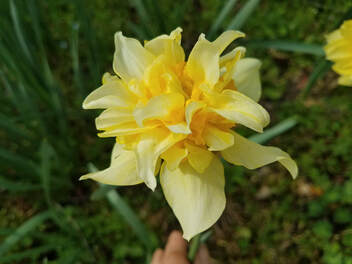The Uses of Flowers in Temples
|
Fresh flowers are an essential offering in every Hindu home and Temple. Flowers which have been offered to the Deity are given to people as a blessing. Specific flowers are considered sacred to specific Deities, like Dhatura for Shiva, Parijata for Vishnu, lotus for Lakshmi, Marigolds for Ganesha, Palasha for Sarasvati, hibiscus for Kali, Arali / oleander for Murugan and Durga, Tulasi / Holy basil for Vishnu and his avataras, and Jasmine for Hanuman. The mystical properties of each flower has been understood by the Sages as useful for helping to accomplish certain goals and to manifest specific energies related to the Deities. The Vedic Hymn, known as the Mantra Pushpam praises the sacred flowers and is used in elaborate Temple pujas as flowers are offered to God. Flowers in general are a symbol of purity, peace, joy, and the blossoming of spiritual consciousness. Flowers have been used in cooking and Ayurvedic medicine for millennia and their therapeutic effects are well known. Flowers are often more cooling than other parts of a plant.
|
They help to ease mental conditions and facilitate the release of trauma and resentment. Many ease fever and help to purify the blood. Certain popular culinary flowers like roses and lavender are cooling carminatives that help ease acid reflux and heart burn. Flower in general tend to be good for the heart and cleansing to the liver, though the specific properties of each flower must be understood. Flower have been kept wherever people have lived since ancient times to help mask foul odors and to bring peace and joy. The sight of flowers and their fragrance have an uplifting effect on human consciousness. This ancient wisdom has been confirmed by modern science. In the West, people use essential oils and diffusers for aroma therapy. In the East, this is not necessary because fresh flowers bring color and fragrance to the home each day as they are gathered and offered to God. Flowers are planted in every home garden and kept around the house for their uplifting effects. It brings joy to have flowers around. Many Indian women wear garlands of jasmine in their hair.
|
Ecological Importance of Flowers
Flowers have a great importance ecologically also. They help to attract pollinators to gardens which are essential for abundant harvests of fruits and vegetables. The bright colors and fragrant scents of flowers attract pollinators to gardens. Flowers secrete nectars which are converted into honey. Honey itself has great value as a food and a medicine. Raw, local honey is said to be expectorant, good for the throat and lungs, and helpful to reduce the symptoms of allergies. Flowers provide food for many insects and animal species. Most fruits, grains, nuts, and berries are produced from successfully fertilized flowers. Even if flowers themselves do not constitute a major portion of the human diet, most of the foods we eat could not exist if not for flowers. In fact, around 90 percent of plant species produce flowers, and depend upon these to makes seeds for reproduction. Without flowers, in short we would have very few plants.
Preserving Historic Flower Varieties
We started out planting a few flowering plants to use in puja. Growing our own flowers not only empowers the rituals we conduct buts helps ensure a steady supply of needed blooms is nearby and available when they are required. We started planting a few Indian varieties and a few varieties that grow well here like oleander, marigolds, roses, and carnations. Our collection of flowering plants has increased over the years as we have tried to remain supplied with an assortment of colors and varieties for different purposes throughout the year. As the flower garden has become more diverse, we have attracted more pollinators to the garden which has resulted in better yields of fruits and vegetables. This has led us to an appreciation of the historic varieties which are being forgotten by commerce and modern gardeners. These time tested favorites are beautiful, natural, and many grow well and multiply without much attention. We collect these rare and nearly forgotten gems in our flower garden and we promote their simple beauty and work to preserve them for future generations. Today our collection includes around a dozen varieties of historic roses, around two dozen historic lilies and daylilies, 50 varieties of historic irises, 250 varieties of historic daffodil, and hundreds of varieties of Ayurvedic, European, and Native American flowering herb plants including jasmine, tulasi, marigold, nigella, lavender, chamomile, echinacea, lobelia, and monarda. We sell seeds and plants in season propagated from our collection and plan to soon again have our collection open to the public for viewing.


